Related Research Articles
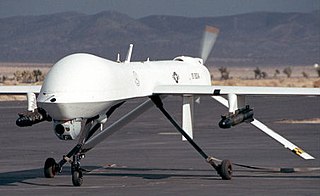
Military robots are autonomous robots or remote-controlled mobile robots designed for military applications, from transport to search & rescue and attack.

A lifeguard is a rescuer who supervises the safety and rescue of swimmers, surfers, and other water sports participants such as in a swimming pools, water parks, beach, spa, river and lake. Lifeguards are trained in swimming and CPR/AED first aid, certified in water rescue using a variety of aids and equipment depending on requirements of their particular venue. In some areas, lifeguards are part of the emergency services system to incidents and in some communities, lifeguards may function as the primary EMS provider.

An unmanned combat aerial vehicle (UCAV), also known as a combat drone, is an unmanned aerial vehicle (UAV) that usually carries aircraft ordnance such as missiles, ATGMs, and/or bombs in hardpoints and is used for drone strikes. These drones are usually under real-time human control, with varying levels of autonomy.
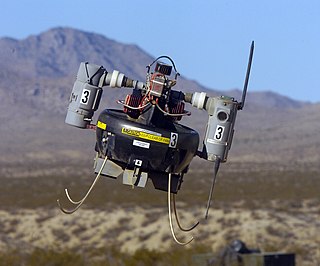
A micro air vehicle (MAV), or micro aerial vehicle, is a class of miniature UAVs that has a size restriction and may be autonomous. Modern craft can be as small as 5 centimeters. Development is driven by commercial, research, government, and military purposes; with insect-sized aircraft reportedly expected in the future. The small craft allows remote observation of hazardous environments inaccessible to ground vehicles. MAVs have been built for hobby purposes, such as aerial robotics contests and aerial photography.

Huntington State Beach is a protected beach in Southern California, located in the City of Huntington Beach in Orange County. It extends 2 miles (3.2 km) from Newport Beach north to Beach Boulevard, where the Huntington City Beach begins. The 121-acre (49 ha) park was established in 1942.
The International Life Saving Federation (ILSF) is an organisation for drowning prevention, water safety, lifesaving and lifesaving sports.

Lifesaving is the act involving rescue, resuscitation and first aid. It often refers to water safety and aquatic rescue; however, it could include ice rescue, flood and river rescue, swimming pool rescue and other emergency medical services. Lifesaving also refers to sport where lifesavers compete based on skills, speed and teamwork. Lifesaving activities specialized in oceanic environment is called surf lifesaving or coastal lifesaving.
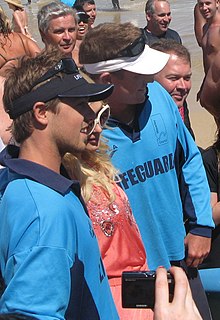
Bondi Rescue is an Australian factual television program which is broadcast on Network 10. The program which has aired since 2006, follows the daily lives and routines of the Waverley Council professional lifeguards who patrol Bondi Beach.
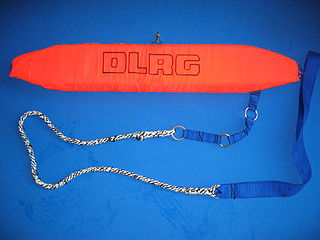
A rescue buoy or rescue tube or torpedo buoy is a piece of lifesaving equipment used in water rescue. This flotation device can help support the victim's and rescuer's weight to make a rescue easier. It is an essential part of the equipment that must be carried by lifeguards. It further can act as a mark of identification, identifying an individual as a lifeguard.
The Guidance, Control and Decision Systems Laboratory (GCDSL) is situated in the Department of Aerospace Engineering, Indian Institute of Science, Bangalore, India. The Mobile Robotics Laboratory (MRL) is its experimental division. They are headed by Dr. Debasish Ghose, Full Professor.
A rescue lifeboat is a boat rescue craft which is used to attend a vessel in distress, or its survivors, to rescue crew and passengers. It can be hand pulled, sail powered or powered by an engine. Lifeboats may be rigid, inflatable or rigid-inflatable combination-hulled vessels.
Parrot AR.Drone is a discontinued remote controlled flying quadcopter built by the French company Parrot. The drone is designed to be controlled by mobile or tablet operating systems such as the supported iOS or Android within their respective apps or the unofficial software available for Windows Phone, Samsung BADA and Symbian devices.
Water safety refers to the procedures, precautions and policies associated with safety in, on, and around bodies of water, where there is a risk of injury or drowning. It has applications in several occupations, sports and recreational activities.
E.M.I.L.Y. is a robotic device used by lifeguards for rescuing swimmers. It operates on battery power and is operated by remote control after being dropped into the water from shore, a boat or pier, or helicopter. Using an impeller motor to travel through water, it is able to reach victims much faster than a human lifeguard can by swimming, and it is more compact and less expensive to maintain than manned watercraft. It can also operate in weather and surf conditions that make other rescue attempts impractical. Once it reaches the victims its foam core allows it to function as a flotation device for up to 4-6 people holding onto side ropes or handles.

RoboBee is a tiny robot capable of partially untethered flight, developed by a research robotics team at Harvard University. The culmination of twelve years of research, RoboBee solved two key technical challenges of micro-robotics. Engineers invented a process inspired by pop-up books that allowed them to build on a sub-millimeter scale precisely and efficiently. To achieve flight, they created artificial muscles capable of beating the wings 120 times per second.
The International Surf Lifesaving Association (ISLA) is a nonprofit organization that advances professional lifesaving development to areas in need around the globe. ISLA uses latest technology to identify areas in need. ISLA advances development through lifeguard training programs and aquatic rescue operation consults, lifeguard exchanges, equipment donations, and by integrating with drowning prevention organizations to share information, techniques, stories, and culture.
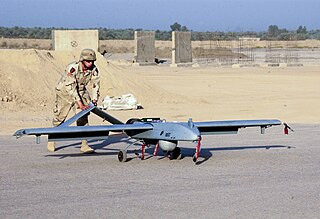
A delivery drone is an autonomous unmanned aerial vehicle (UAV) used to transport packages, medical supplies, food, or other goods. In November,2020 the FAA proposed airworthiness criteria for type certifcation of delivery drones with an intent to initialize commercial operations. Zipline, Wingcopter, and Amazon Prime Air are amongst the 10 companies selected for this type certification.

Proactiva Open Arms is a Spanish NGO devoted to search and rescue (SAR) at sea. Set up in October 2015, it carried out its first rescue action that same month from its base on the Greek island of Lesbos.
Pakistan Life Saving Foundation is a registered Non-Government Organization (NGO) in Pakistan. This internationally accredited NGO was established in 2004 for the purpose of providing life-saving services along the beaches of Karachi (Pakistan). It is the country’s only privately run, near-shore drowning prevention and rescue body. It employs around 250 trained lifeguards that belong to the neighboring coastal fishing communities.
References
- ↑ Kelion, Leo (13 November 2013). "Iran develops sea rescue drone prototype in Tehran". London: BBC News . Retrieved 13 November 2013.
- ↑ RTS Lab
- 1 2 Sweeney, Fabian (1 February 2015). "Sink or Swim? The global drowning crisis". London: BBC News . Retrieved 1 February 2015.
- ↑ A Flying Lifeguard Robot Could Save You From Drowning by Jessica Leber, Fast Company,January 29, 2014
- ↑ Pars life-saving flying robot is now a reality by Jonathan Fincher, Gizmag,November 19, 2013
| This technology-related article is a stub. You can help Wikipedia by expanding it. |
| This article on an unmanned aerial vehicle is a stub. You can help Wikipedia by expanding it. |